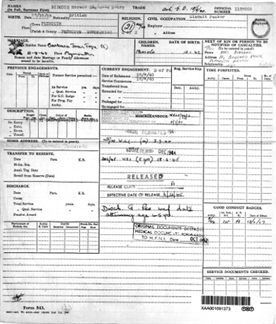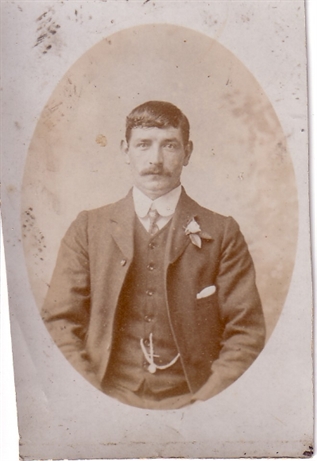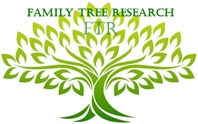
Family Tree Research
TRACING ROOTS BACK FOR YOU
DETAILS - with family tree work, the devil really is - in the details!
SOURCES & RECORDS
Sources and records come in many forms, shapes and sizes. They can be primary or secondary, original or copied. Sources can also be prone to error. Sources may be missing (as in lost or destroyed) or missing because, although they do exist, they're not in the place we would expect to find them. Sources are normally thought of as being "something printed or written on paper" but they could also be an image, an object... or a memory. Many sources are available online, and just as many still reside on paper records stored in a box, bookshelf or filing cabinet (but hopefully not too dusty!)
We cannot claim to be able to find all the sources and records to establish a person on your family tree and it would be foolish and dishonest to pretend we can. Indeed it is possible we may not be able to find any source records for a person, and in those cases - sometimes - that branch of the family tree comes to an end - temporarily we hope! However, there has never been a better time in the history of Genealogy when a more varied amount of source material is available to be found by the researcher. However, most sources are relatively easy to track down.
Typical sources include formal records of significant events in a person's life like births, baptisms, marriages, deaths and burials. National censuses and military records also provide valuable data. In family history studies these sources are typically quoted (the official term is "cited") in order to establish verification of a family linkage. We cite all our sources in your family tree so that the source can be independently verified by someone else wanting to check to see if that source is indeed correct. Citing sources is often neglected in the rush to find as many tree branches as possible and pushing them back as far as possible.
Sources and records come in many forms, shapes and sizes. They can be primary or secondary, original or copied. Sources can also be prone to error. Sources may be missing (as in lost or destroyed) or missing because, although they do exist, they're not in the place we would expect to find them. Sources are normally thought of as being "something printed or written on paper" but they could also be an image, an object... or a memory. Many sources are available online, and just as many still reside on paper records stored in a box, bookshelf or filing cabinet (but hopefully not too dusty!)
We cannot claim to be able to find all the sources and records to establish a person on your family tree and it would be foolish and dishonest to pretend we can. Indeed it is possible we may not be able to find any source records for a person, and in those cases - sometimes - that branch of the family tree comes to an end - temporarily we hope! However, there has never been a better time in the history of Genealogy when a more varied amount of source material is available to be found by the researcher. However, most sources are relatively easy to track down.
Typical sources include formal records of significant events in a person's life like births, baptisms, marriages, deaths and burials. National censuses and military records also provide valuable data. In family history studies these sources are typically quoted (the official term is "cited") in order to establish verification of a family linkage. We cite all our sources in your family tree so that the source can be independently verified by someone else wanting to check to see if that source is indeed correct. Citing sources is often neglected in the rush to find as many tree branches as possible and pushing them back as far as possible.

If a source is held on an internet-based database or service, the source can be obtained instantly. Others can take between a few days (e.g. the GRO) and several weeks (e.g. some military service records) to obtain. This is mainly because, in these latter cases, human intervention from a third-party is often necessary. Occasionally sources held at a distant location may be personally viewed. Only relatively few church parishes, for example, have the contents of their registers on the internet. Many have Parish Clerks who are willing, normally for a small fee, to look-up information on your behalf and perhaps copy or photograph an image for you. But sometimes you may have to physically visit the Parish yourself and examine their records in place.
SOFTWARE
Keeping all the paperwork together for your family tree is no longer the mammoth task it once was thanks to the advent of computer databases. All materials and information can be stored digitally. This helps us to organise the information more effectively, easier to retrieve it when necessary and easier to display it.
At FTR we use "RootsMagic" version 7.0 as our main database. According to recent market analysis, "RootsMagic" is the software package most favoured by professional genealogists [link]. There are other, similar programs available that you may have heard of such as "Family Tree Maker", "Family Historian", "Legacy" and several others. All do a perfectly good job and we endorse "all and none" of these, each has their own particular strengths and weaknesses. Some organisations allow you to build your family tree online. These include companies like "Ancestry" and "Family Search" which will let you build your tree for free but you will need to pay a subscription if you want to access their source records. One thing that almost all of these packages have is the ability to pass data between them by using a "standard format" of how the data is stored and used - GEDCOM (Genealogical Data Communication).
GEDCOM and the church - The members of the Church of Jesus Christ of Latter-Day Saints (The "Mormons") essentially believe that their deceased ancestors can be baptised into the Mormon faith, despite the fact that they are... well... dead. To achieve this the Mormon Church must trace and document the ancestral lines of each and every one of their members. In Salt Lake City, Utah, USA, a LDS church vault capable of withstanding a nuclear attack contains the genealogical records of an astonishing 2 billion people. You are probably there in some form or another, even if you don't know it! Plans to digitise all these records began in 2002 and the need for a "digital standard" led to the parallel development of the GEDCOM data structure. This is good news for family historians and, consequently, the vast majority of commonly available family tree software programs store their data using rules established by GEDCOM.
This means that we can give you your family tree data in a form that can be transferred easily into almost any software package you choose to use, whether it be based on your own computer or held online. If you choose to have your tree presented in a more traditional "paper" format (i.e. non-digitally) this would incur extra charges for printing & binding etc.
Keeping all the paperwork together for your family tree is no longer the mammoth task it once was thanks to the advent of computer databases. All materials and information can be stored digitally. This helps us to organise the information more effectively, easier to retrieve it when necessary and easier to display it.
At FTR we use "RootsMagic" version 7.0 as our main database. According to recent market analysis, "RootsMagic" is the software package most favoured by professional genealogists [link]. There are other, similar programs available that you may have heard of such as "Family Tree Maker", "Family Historian", "Legacy" and several others. All do a perfectly good job and we endorse "all and none" of these, each has their own particular strengths and weaknesses. Some organisations allow you to build your family tree online. These include companies like "Ancestry" and "Family Search" which will let you build your tree for free but you will need to pay a subscription if you want to access their source records. One thing that almost all of these packages have is the ability to pass data between them by using a "standard format" of how the data is stored and used - GEDCOM (Genealogical Data Communication).
GEDCOM and the church - The members of the Church of Jesus Christ of Latter-Day Saints (The "Mormons") essentially believe that their deceased ancestors can be baptised into the Mormon faith, despite the fact that they are... well... dead. To achieve this the Mormon Church must trace and document the ancestral lines of each and every one of their members. In Salt Lake City, Utah, USA, a LDS church vault capable of withstanding a nuclear attack contains the genealogical records of an astonishing 2 billion people. You are probably there in some form or another, even if you don't know it! Plans to digitise all these records began in 2002 and the need for a "digital standard" led to the parallel development of the GEDCOM data structure. This is good news for family historians and, consequently, the vast majority of commonly available family tree software programs store their data using rules established by GEDCOM.
This means that we can give you your family tree data in a form that can be transferred easily into almost any software package you choose to use, whether it be based on your own computer or held online. If you choose to have your tree presented in a more traditional "paper" format (i.e. non-digitally) this would incur extra charges for printing & binding etc.



What is proof?
Evidence is found in the records. Proof is something that ultimately happens in the mind of the genealogist.
Helen Osborn - "Genealogy - Essential Research Methods"



